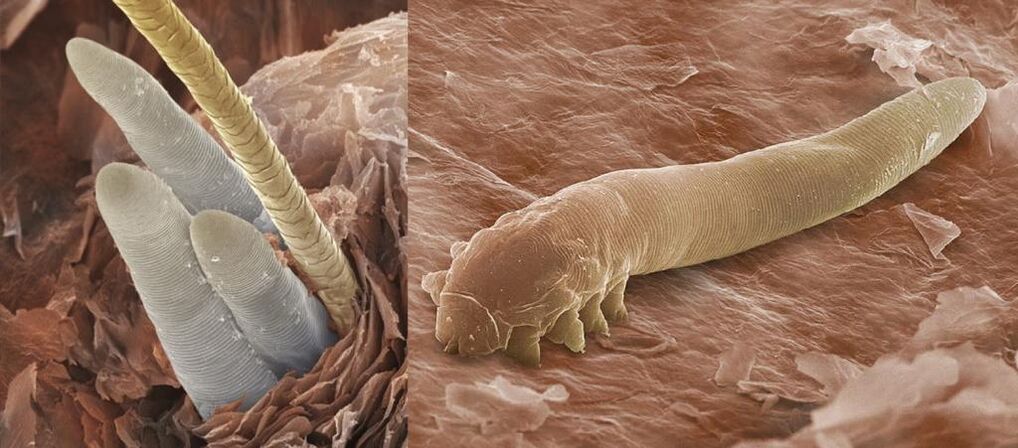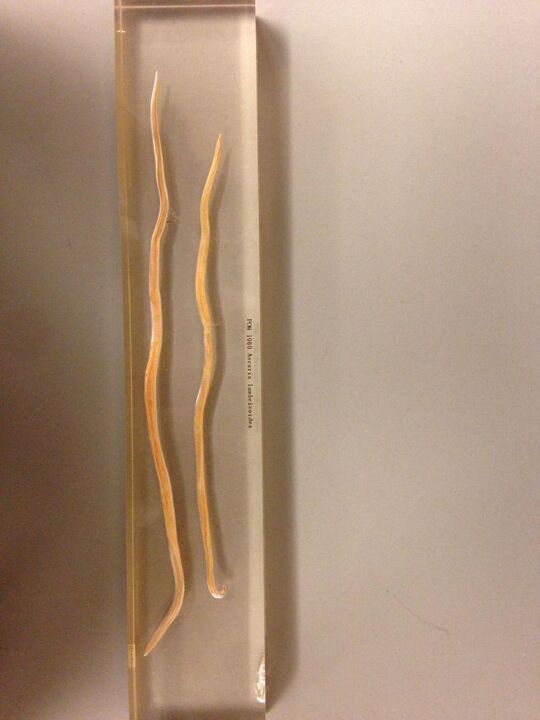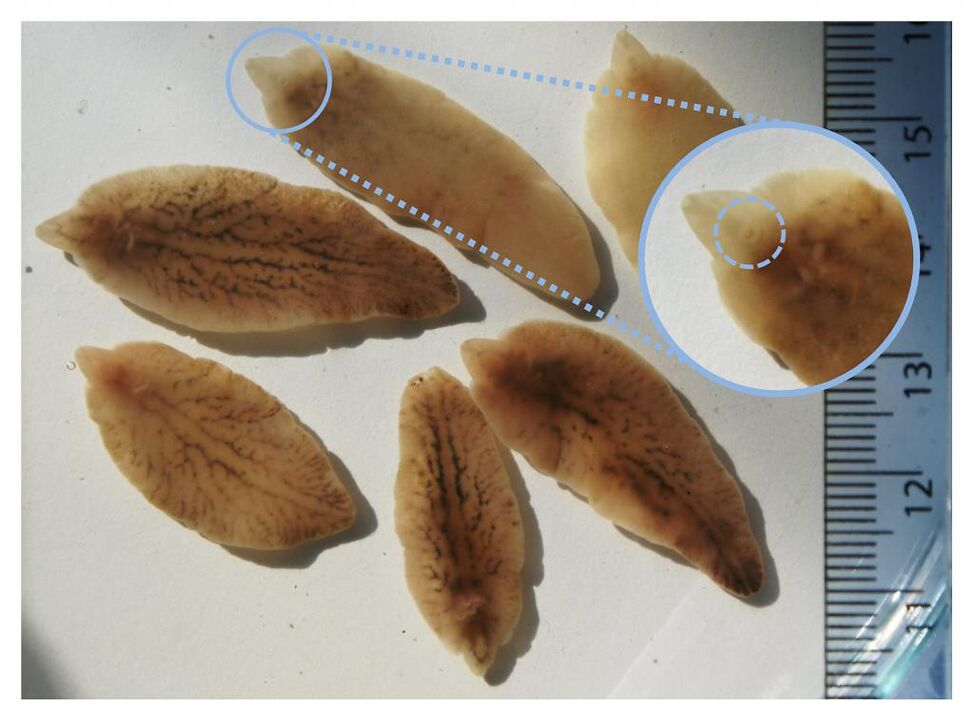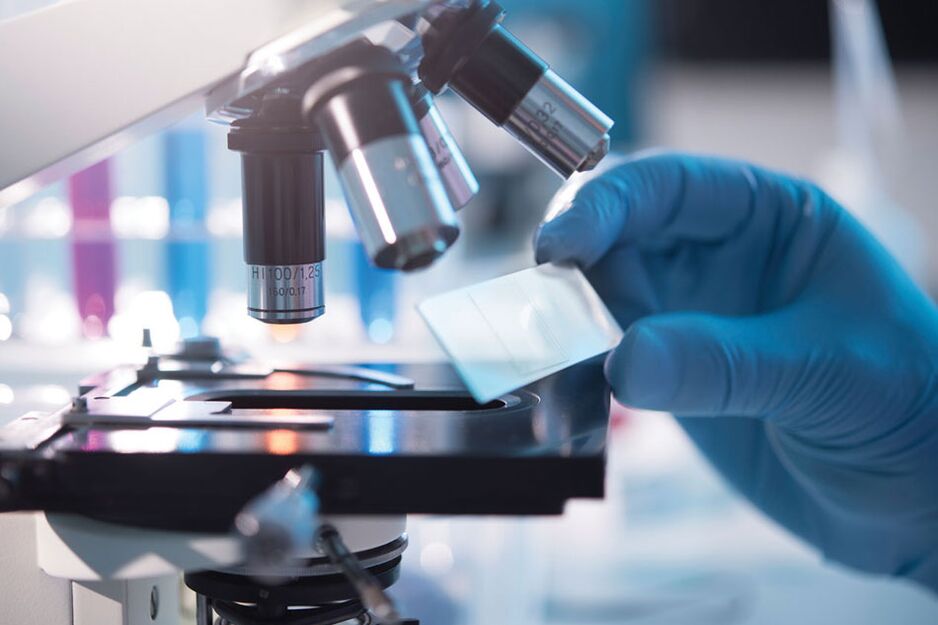Parasitic infections represent a variety of symptoms and diseases caused by the inclusion of eggs or adult parasites into the human body.Often, the first signs of the disease cannot be detected for several days, and in some cases, several months or even years.This is due to their parasitic life cycle and their main functions: good disguise and maintaining their own lives by receiving nutrients from the host body.
Their type of parasites and their features
Parasitic infections, depending on the specific properties of their manifestations, are divided into three groups:
- Ectoparasites.
The main location is the surface of the human body.These include lice, fleas, fleas and bedbugs.They feed on human blood, even in some cases, such as mites that cause demodicosis, the main food is the secretion of sebum glands or dead epithelial (skin) cells. The first signs of parasitic infections are relatively recognizable, as they cause itching and burning in their habitat.Some ectoparasite are the carriers of serious illnesses: typhus, anthrax, encephalitis and trypanosomiasis.They cause major damage to human health, including death.
The first signs of parasitic infections are relatively recognizable, as they cause itching and burning in their habitat.Some ectoparasite are the carriers of serious illnesses: typhus, anthrax, encephalitis and trypanosomiasis.They cause major damage to human health, including death. - Endoparasites (protozoa).
Especially affecting the internal organs.They are unicellular in the structure, so the name protozoa.However, they can lead to severe forms of illness.The main disease of this group is parasitic blood infection caused by toxoplasma and intestinal infections caused by amoeba or giardia. - Helminths.
They are the most common form of parasite infection.In the human body, their developmental cycle is primarily in the intestines and tissues, where the manifestation of the symptoms of the disease begins.
Circular round (nematoda)
This is a parasite whose body is round in the cross.Sexual features are easy to distinguish.Women are usually larger than men.But the representatives of these classes also have Hermaphrodites.All nematodes go through developmental stages: eggs, larvae, and adults.This class includes:
- Pinworm.The disease is caused by enterobiasis.It mainly affects preschoolers and elementary school age.
- Whipworm.Cause trichuriasis disease.Has its own body shape.2/3 The length of the body has a thin diameter, reminiscent of human hair or thread.The other end of the body is larger in diameter and contains intestines.
- Ascaris.The disease is caused by ascariasis.Adults reach size of 25 cm (male) and 40 cm (female).After the larva enter the human body, it passes through the stomach and enters the small intestine.From there, through the pores with blood flow, it enters the liver, then to the liver and then to the lungs, where it develops within 7-10 days.Then the larva started to go up to the larynx.Once they reach the oral cavity, they are swallowed.Once in the small intestine, the larvae cannot re-enter the bloodstream through the pores due to its large size.There they grow to adults within 2-3 months.After this, the reproduction begins and the cycle repeats.Women can put more than 200 thousand eggs daily.

Tape worm (Cestod)
This is a parasite whose body resembles a ribbon.The special feature of this class is the absence of the digestive system.These include:
- Echinococcus.The disease is caused by echinococcosis.This parasite is small (2-9 mm) and consists of several segments and inhalers.Sexual individual uterus contains a large number of eggs, where there is larvae.The main place of localization of echinococcus is the liver and lungs.There it causes a chronic disease called Hidatid cyst.
- Bull Tapeworm.Causes teniarinchiasis.At the larvae level, it has a mid -host - a cow.Once in the human body, it develops in the small intestine to the ribbon.The adult parasite body has up to 1000 segments, and it can reach a length of 4-10 meters.
- Pork worms.Cause taeniasis disease.Externally, it is very similar to the worm tape.It also has a mid -host: pigs, dogs, camels, hares and rabbits.In humans it is parasites in the intestines.The size of an adult individual does not exceed 4 meters long.
- The worm is wide.The disease is caused by diphyllobothriasis.Stay in the freshwater body.It uses crustaceans and fish as the middle host.In the human body it is a small intestine parasite.Adults can reach several meters long.
Flatworms (flukes)
During their life cycle, these parasites can change some mid -host.In humans they can parasites anywhere.This group includes:
- Schistosomes.The disease is caused by schistosomiasis.They can enter the human body through contact with contaminated freshwater.Parasites penetrate the skin and enter the blood circulation system, where they begin to actively reproduce.Women can produce from 300 to 3000 eggs daily.Further, with blood flow, eggs spread throughout the body and continue their development where the organ.Their body length does not exceed 0.1-0.2 cm.
- Liver flukes.The disease is caused by opisthorchiasis.Adult length varies from 3 to 5 cm.When it enters the human body, it is parasites of bile ducts, gall bladder, liver and pancreas.It is prescribed in these organs using a suction cup located on the body.

How to penetrate parasites into the human body
- The dietary path of the infection is considered the most common.One becomes infected with parasites by eating vegetables and non -washed fruits.Meat that has not undergone enough heat treatment is very dangerous.Also, one is infected with parasitic infections if personal hygiene rules are not followed.For example, do not wash your hands before eating.
- Transplacental route.Parasitic infections are transmitted from pregnant women through placenta to children.For example, these are diseases such as toxoplasmosis, malaria or worms.
- PERTANANEUS ROAD.Parasites enter the human body through the skin.These are mainly schistosomes and hooks.
- Contact path.These parasites are transmitted by dirty hands, contaminated personal items, and underwear.This is how lice, sores, and pinworms are most often sent.
- Delivery route.Infection occurs after the bite of insects carrying parasites.For example, malaria.
Symptom
Many parasitic diseases have no symptoms in the early stages.This is due to the developmental stage of pathogenic.Each type of individual parasite shows differently as it grows.The general symptoms of parasitic infections include:
- Itching.
- Skin redness is like urticaria.
- Diarrhea.
- Constipation.
- Bloated.
- Nausea, vomiting.
- Cramps and pain in the gastrointestinal tract.
- Losing weight without diet or increasing physical activity.
- Fever condition.
- High body temperature (38-40 ˚C) for a long time.
- Prolonged attacks from dry cough.
- Enlarged lymph nodes.
- Painful sensations in the muscles.
- Psycho-Emotional Disorders.
Diagnostics

If you suspect the presence of parasitic disease, you must undergo a series of tests.The diagnosis of parasitic infection allows us to determine the presence or absence of parasites, its type and location in the body.The data obtained will help the doctor make the right diagnosis and prescribe the right treatment.
Diagnostic methods include:
- Feeling Exam.Allows you to determine the presence of most types of parasites that remain in the intestines.Eggs, larvae and their body segments are removed in stools.There are two types of analysis:
- Sample stools are checked for eggs and Helve larvae.The analysis was sent to the laboratory, where the doctor made a smear and examined them under the microscope.This method is often used, but it is not quite accurate.To make a final diagnosis, the patient must undergo this test three times with a short interval.This is due to the parasite life cycle and egg placement, which is detected by this research method.
- Scraping (washing) from the anal folds.This test is used to detect only one type of helminth - pinworms.Parasitic infections are more common in children than adults.For this reason, this analysis is performed primarily for children.Laboratory technicians moisturize cotton or glasses in water or glycerin and rinse them from perianal folds.Next, the resulting material is used for glass slides and inspected under a microscope.This analysis is also performed using different methods: Laboratory assistants attach a piece of adhesive tape to the anal path, press it and peel it.The adhesive tape is then stuck to the glass slide and is also seen under the microscope.Parasites are diagnosed accurately.Using this method, laboratory assistants can examine not only eagle eggs, but sometimes also adult individuals.
- Cerebrospinal fluid examination, phlegm, duodenal content (bile), urine.Prescribed based on the results of the patient's survey to determine the presence of the parasite and determine the location.This biological fluid was analyzed using microscopy and macroscopy.First, the resulting sample is examined for the presence of adult individuals, and then microscopy is performed to detect eggs and parasitic larvae.
- Blood test.Modern methods for testing blood for parasitic infections make it possible to determine the presence and type of pathogen with high accuracy.Three types of diagnostics are used:
- Serological reactions.Allows you to determine the presence of parasitic antibodies in the patient's blood serum.This method is considered very specific, but is lower than the diagnostics of PCR.
- PCR diagnostics.This method is based on identifying parasitic DNA in any biological fluid taken for analysis.
- Genetic research.It involves detecting the parasite genome in the patient's blood sample.This method is used more often than everything else, but has high accuracy.
- Inspection of biopsy materials and lymph nodes.For this analysis, doctors declare a small section of the organs, tissues, or lymph nodes and send them for histological examination.In this way the presence or absence of parasites is diagnosed.
Suggestions to get ready for the test
Before taking tests for parasitic infections, you need to prepare them properly.If the recommendation is followed, the accuracy of the diagnosis increases, as the substance does not contain disturbing factors that affect the effectiveness of the research method.
Ready for stool test:
- Antibiotics, anti-inflammatory and antacid drugs should be stopped.The use of drugs and other medicines containing bismut and iron is also unacceptable.
- If the X-ray examination uses barium or colonoscopy, where enema is performed to clean the intestines, then the stool test can only be taken after 2-3 days.
- It is not recommended to donate stools if menstrual bleeding begins or hemorrhoids worsen.
Ready for blood tests:
- It should stop taking pharmacological medications that affect blood count.
- Three days before the test, you should follow a light diet, do not eat fatty foods, and give up alcohol.
- Blood tests for parasitic infections are taken on an empty stomach.Drinking some clean drinking water is allowed.
For other tests, no special preparation is required.You just need to follow the doctor's recommendation.
Treatment
Unfortunately, the symptoms of parasitic infection cannot be detected in the early stages of the disease.In such cases, the treatment begins late.It is important to understand: the longer the parasites remain in the body, the more difficult it is to get rid of it.
Infectious infection and parasitic therapy is divided into two areas:
- Symptomatic treatment.Aimed at eliminating the clinical manifestations of the disease.These include lowering body temperature, eliminating redness and itching, and normalizing gastrointestinal tract function.
- The etiological treatment of parasitic infections is intended to get rid of the agent of the disease.
In some cases, surgery may be required.It can be used for alveococcosis, echinococcosis and some types of trematode infections.
When the body is dehydrated, a solution containing salt is prescribed.
Only doctors can prescribe treatment for parasitic infections based on laboratory tests and patients' interviews.
Prevention
It is very important to observe the prevention of parasitic infections.In most cases, this will help prevent pathogens from entering the body.

Preventive measures include:
- Compliance with personal hygiene rules: You must wash your hands before eating food, after visiting the toilet, and returning from the road.
- Vegetables and fruits need to be well washed.
- It is important to carry out sufficient heat treatment for meat, fish and seafood.
- Pipes should not be used as drinking water, as they may not always be free of parasites.Using home filters as additional cleaning will not help.The best option is to drink boiled water or bottles.
- If pets live at home, they need to be built once every six months.You should also limit contact with your pet if it shows signs of parasitic disease and contacting a veterinary clinic.
- You need underwear (especially children) after washing.
- After visiting the exotic countries, while working with the soil, as well as children's institution workers, it is advisable to be examined once a year for the presence of parasitic infections and, if necessary, performs prophylaxis with medication.
























